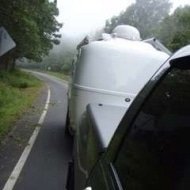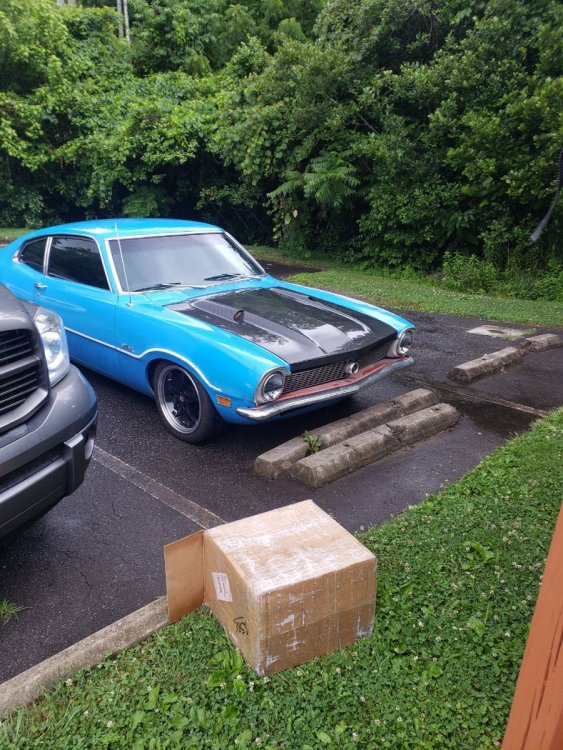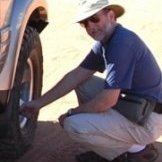Leaderboard
Popular Content
Showing content with the highest reputation on 07/15/2021 in all areas
-
A wonderful couple arrived this morning to pick up their new to them Ollie #359. I'll let them introduce themselves when they are ready. Our time with Ollie was one filled with fun times, interesting places, and great new friends. I remembered what I went through during our orientation at our Ollie purchase - and lamented upon the stories shared here on the forum relating to things some didn't fully understand after the orientation and struggled with at the campground for the fist time. I did not want the new Oliver owners to go through a less than through purchase. So this was not the ordinary person to person sale - my goal was to share as much and many learnings as I could - fully explaining the systems, features, and quarks of Ollie ownership. The new owners left about 5 hours later - with a video history of the entire "orientation". I feel comfortable knowing Ollie is in good hands - and more importantly - the folks are set up to enjoy Oliver with reduced stress and concern. Tally Ho!! I know the Oliver family will take good care of them- and heartily welcome them when the time is right. To the future, RB Minus the Oliver.....8 points
-
Really good points John, and if using a crossover SUV or even a shorter truck frame based SUV like your Land Cruiser stronger consideration for a WDH would certainly be in order. If not mistaken the wheel base on my F150 (Super Crew/6.5 foot bed) is 158 inches which goes a long way toward stability as you have pointed out. Just wanted to emphasize my previous post was not meant as dissing those who choose to implement the WDH, far from it. Everyone should do what is comfortable and sensible for their situation. Safe travels.2 points
-
Probably not much new to add to this conversation other than to say we have had our Elite II for just over 6 years now with well over 20K miles of towing and in all sorts of weather from howling winds (side and headwinds), to torrential downpours for days and do not have the WDH. FWIW I was the one who started the initial conversation some 6 or so years ago back in the day when Robert Partee was still with us. At that time Oliver did not use or suggest any WDH and no one who owned an Oliver used them either. I only brought up the issue having looked into the the specs on all towing vehicles and thought it curious Oliver did not recommend them and wanted a better understanding. The result of that thread led to Oliver adopting the Anderson. There are two specs for all tow vehicles, one with and one without a WDH and this includes not only the towing capacity but the load limits on the hitch itself. Typically a decal or equivalent is applied to the underside of the hitch stating its load and tow limit and typically those values are cut in half by approximately 50% + o - when towing without a WDH. Given my tow vehicle (an F150) my values were just under or right at the limits, so with much cogitation on the subject I chose NOT to use the Anderson. Keep in mind most all newer trucks have electronic anti-sway devices built into the system and at least on my truck this seems to work admirably. I say this because on more than one occasion I have been subjected to some harrowing emergency maneuvers on the highway while towing, or extreme wind conditions while the Oliver stayed where it should, right behind me. None of this is to suggest others do not adopt the WDH, each individual has to figure out what they are or are not comfortable with. Perhaps I am being a penny wise and pound foolish but thus far I have not seen, with my tow vehicle, the need for a WDH. Worth mentioning in the initial thread some 6 or so years ago a few comments suggested outside of the RV industry these towing specs are either completely ignored or completely unknown to the towing public, ie horse trailers, construction trailers and so on and so forth. Sure enough not sure I've ever seen anyone outside the RV industry hooked up to a heavy trailer of any sort with anti-sway or WDH hitches. Oh well. As others have suggested, tow safely and sensibly at all times with a light foot on the gas pedal. As a rule I tend to stay around 65 on the major highways a bit slower 55-60 on two lanes and will rarely get to 70 unless under idea conditions with virtually no traffic near me. My own general rule is to travel at least 5-10 mph slower than the given flow of traffic. YMMV of course. Hope this helps.2 points
-
Talked to NuCamp and they said they were going to build three Barefoot protoypes before starting production of this camper in the US. They are also working on supply chain issues right now. There is only one prototype so far, but not available for interior inspection. My guess it's a hull prototype without finished interior. The dining area converts to a 6'X6' bed. Overall exterior height of the UK model is about 7.7', but that's probably without AC.2 points
-
I did a web search about using anti-sway devices in slippery road conditions. I was just curious. Both Curt and Reese anti-sway friction bar devices have a manufacturers warning stating that they should not be used in road conditions that could cause a loss of traction. I did not run across any similar cautions for the Anderson or any of the torsion bar type WDH's. Bear in mind that an anti-sway friction bar is an entirely different animal than the Anderson. They both operate on a friction principle but a friction bar is only mounted on one side of the trailer frame (and connected to a side mounted auxiliary ball on the hitch), whereas the Anderson is completely different. The friction on the Anderson is evenly distributed and constant. It behaves differently than a friction bar, and friction bars provide no weight distribution. Regardless of what system you use (or none at all) you need to adjust your speed to suit the road conditions. Slow down.2 points
-
So, saw this when we stopped for dinner the other night at our favorite CaliMex restaurant near Asheville. It brought back so many fond memories of my original little Maverick. Now, I'm looking, 50 years later, at the new Maverick tiny pickup. With 4 x 4 and 4k, tow package, it could actually tow our smaller boat, and even my Elite (though only locally, flatland Florida). No hybrid, though, with 4 x 4. Bummer. Disclaimer: my original Maverick was plain white. No "cool" carbon fiber hood.2 points
-
5+ years with our 3 way. No issues. We drive with propane on. We have never used 12V. The freezer keeps ice cream solid. We put warm cans/bottles in and they cool down, just like home. It uses very little propane. I don’t think this is something you need to worry about. Mike1 point
-
1 point
-
1 point
-
I will add one thing, short wheel base tow vehicles like my LC 200 (112 inches) most likely require the use of the Andersen. Mine certainly would be uncomfortable and even dangerous without it. If you have a “typical” light duty pickup truck, with a WB of 140 to 155 inches, the Andersen may help, but it won’t be as dramatic an improvement as with a shorter truck. The longer WB truck will also be inherently more stable, less willing to swap ends in a high speed maneuver. This is simple physics. This is one reason a reaaaaaly short wheelbase vehicle like a two door Wrangler (93”) makes for a dangerous tow vehicle, and why you so often see them in ditches in icy conditions. They just don’t have much lateral stability. PS, towing puts a lot more stress on the suspension, especially the rear shocks. Keep an eye on them and replace them at the first sign of distress (usually an oil stain, indicating a blown seal). I replaced the rears myself, a few months ago, and the front struts are getting replaced by a shop as I type, three of the four units showed signs of oil leakage at 140,000 miles. John Davies Spokane WA1 point
-
Rvupgrades is out of stock on the dome with the led light, but if I were you, I'd wait for it. It's really nice to have the overhead light, for just a few bucks more. It's a fairly soft light, not too glaring. You can also check camping world. About $90 there, but very few stores have it in stock.1 point
-
Oh, I see, he bought a Bigfoot. The Barefoot is a different little camper, built previously only in the uk. NuCamp will be producing it here in the US, and selling through a dealer network.1 point
-
I”ll bet it was thorough hand off, maybe you should send a copy of the video to Oliver!! Keep us posted on your new activities. We’ll miss your Oliver insights…. Mike1 point
-
1 point
-
The OLDER style ball assembly is open to the elements, for the past couple of years the new style has been better, it has a black collar that retains the friction cone and a seal, and it helps to keep out water and grit. The old one could eventually start squealing horribly, what I call the Spawn of Satan, which would definitely wake up an entire campground if you attempted an early departure after a rain storm. Every slight turn and twist could cause it to shriek. Very unpleasant, and embarrassing. BTW old ball mounts can still be turned into Andersen with $100 and they will send you a brand new one. Don’t worry about the new one in inclement weather. John Davies Spokane WA1 point
-
Never heard of this. We never did anything different in bad weather. We towed in all kinds of weather for 5 years. Mike1 point
-
@Middlefork49you will not be needing to disconnect the Andersen WDH for various types of weather; leave it connect and you will not have any issues.1 point
-
Oliver set us up nicely with the Andersen hitch at delivery and helped us with some dialetric grease to help with come corrosion on our 7 pin plug. They were very helpful. 2 items to consider. Make sure you have an electric brake controller in your tow vehicle. Also some stainless steel wire to secure the shackles on the whale tail of the Andersen hitch. I totally missed that and found ours were pretty loose at the recent Maine rally. One of the other Oliver owners noticed it and we tightened them up. Thanks Billy!!!!!1 point
-
No there’s no latching mechanism on our Ventline. Other than the wooden dowel that we are using now. And regarding microfiber towels, I really like the turquoise colored towels from the Mart of Wal. We use them for wiping down the bath and the exterior and interior of the Oliver. They work real well with Duragloss. In fact I’m using one as a window shade now since I’ve installed the tinted clear glass in the entry door.1 point
-
Welcome to the "family". As you have already gathered, there are really no strangers here. You can ask questions, and you can expect many different answers, some may actually be correct. Welcome from Maine, and hull #211...1 point
-
I've found this to be an interesting thread. For us, best sleep is in the wilderness, regardless of mattress. Fresh air is invigorating in the day, intoxicating at night. I sleep better, and far longer, in our camper than anywhere, with 14 year old cushions, and a memory foam topper. Everything is personal. I always recommend that people start with cushions and a pad, then decide. Standard cushions are included. Memory foam pad (queen cut in two for twins) is under $80 . Upgrade is probably the same price later, if you feel you need it.1 point
-
We went with the stock mattresses in our standard layout at the recommendation of Oliver sales. The reasoning was that the center cushion, if KTT, would be so bulky and heavy that it would make changing to the dinette setup a challenge. My wife Chris put together two 2" memory foam toppers to which she fitted sheets. These are rolled up and stuffed in the backseat of our pickup when not in use. It takes only minutes to switch from full bed to dinette set-up or back using this system. The two toppers, laid over the stock cushions, makes for a very comfy bed.1 point
-
Recent Achievements












